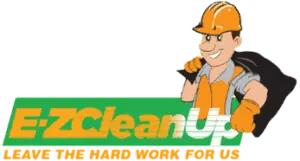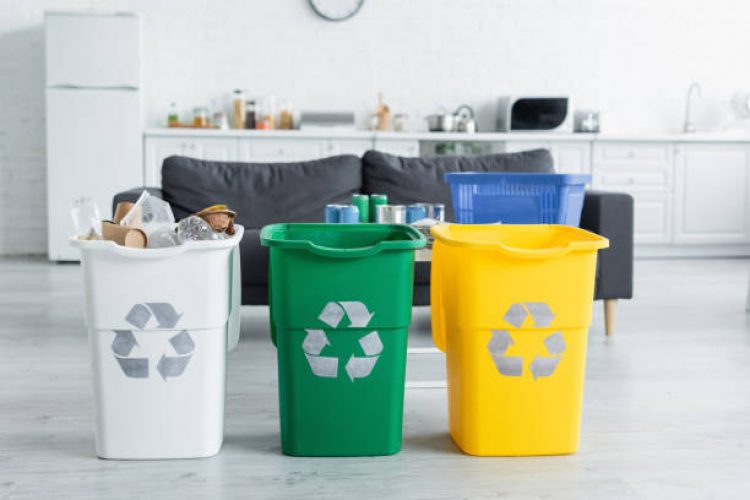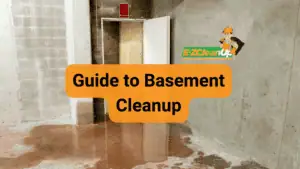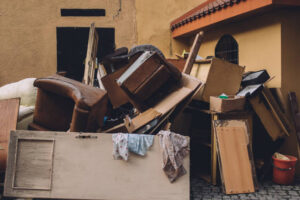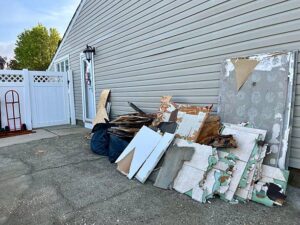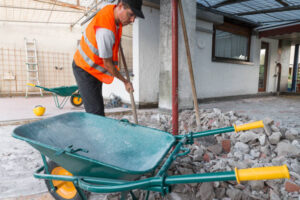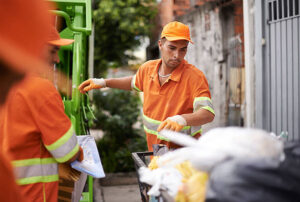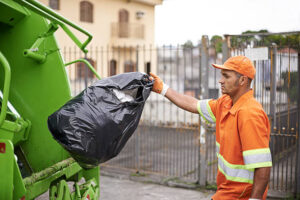Are you ready to declutter your home but worried about the environmental impact? You’re not alone. The average American generates 4.9 pounds of trash per day, adding up to over 292 million tons of municipal solid waste annually. The good news? Much of this waste doesn’t have to end up in landfills. With the right eco-friendly junk removal strategies, homeowners can declutter responsibly while making a positive impact on the planet.
Why Eco-Friendly Junk Removal Matters
Traditional junk disposal methods contribute to overflowing landfills, greenhouse gas emissions, and environmental degradation. Furniture, appliances, electronics, textiles, and construction materials are all reusable, recyclable, or repurposable—but far too often, they’re not handled that way. By choosing sustainable junk removal practices, you can help conserve natural resources, reduce pollution, and support your local community.
The recycling and composting of municipal solid waste saved over 193 million metric tons of carbon dioxide equivalent in 2018—that’s comparable to taking almost 42 million cars off the road for a year!
Top Eco-Friendly Junk Removal Tips for Homeowners
1. Sort and Categorize Before You Discard
The foundation of sustainable junk removal starts with proper sorting. Walk through your space and categorize items into four groups:
- Recyclable (paper, glass, metal, certain plastics)
- Donatable (furniture, clothing, working appliances)
- Hazardous (batteries, paint, chemicals)
- True trash (non-recyclable, non-donatable items)
This sorting process sets the foundation for sustainable disposal and ensures each item finds its most appropriate destination.
2. Donate to Local Charities and Thrift Stores
Before throwing anything away, consider donation. Habitat for Humanity ReStores accept small and large donations of new or gently used furniture, appliances, housewares, building materials and more, with proceeds supporting Habitat’s work in your community.
Other excellent donation options include:
- Goodwill – Accepts clothing, furniture, electronics, and household goods
- The Salvation Army – Takes furniture, household items, and clothing
- Local shelters – Often need blankets, clothing, and non-perishable items
- Habitat for Humanity ReStore – Specializes in building materials and home goods
Pro tip: Donating items like furniture or appliances may qualify for tax deductions, so be sure to request a receipt and consult with a tax professional.
3. Maximize Your Recycling Efforts
The most effective way to reduce waste is to not create it in the first place, making reduction and reuse the most effective ways to save natural resources, protect the environment and save money. However, when disposal is necessary, recycling is crucial.
Common recyclable items include:
- Paper and cardboard
- Glass bottles and jars
- Aluminum cans
- Steel and tin containers
- Certain plastics (check your local guidelines)
Important: The EPA reports that recycling one ton of paper can save 17 trees, 7,000 gallons of water, and 380 gallons of oil. Always check with your local recycling program to understand what materials they accept, as guidelines vary by location.
4. Compost Organic Waste
Don’t overlook the power of composting! If you’re dealing with organic waste, such as food scraps and yard trimmings, composting not only reduces the amount of waste sent to landfills but also creates nutrient-rich soil that can be used in your garden.
What you can compost:
- Fruit and vegetable scraps
- Coffee grounds and filters
- Eggshells
- Yard trimmings and grass clippings
- Leaves and small branches
Each year, home composting could divert 330 pounds of food waste per household from landfills, making it one of the most impactful eco-friendly practices you can adopt.
5. Repurpose and Upcycle Before Discarding
Get creative before you toss! That old dresser could become a unique bookshelf with a fresh coat of paint. Glass jars can transform into storage containers or planters. Wooden pallets can be turned into garden furniture or vertical gardens.
Benefits of repurposing:
- Reduces demand for new products
- Saves money
- Unleashes your creativity
- Keeps items out of landfills
6. Handle E-Waste Responsibly
Electronics require special attention due to hazardous materials they contain. Electronic waste contains potentially hazardous materials including lead, mercury, cadmium, and aluminum, and without careful disposal or recycling, these materials can severely impact human health and the environment.
Eco-friendly junk removal companies work with certified e-waste recyclers that follow strict regulations in dismantling and processing electronics. Many retailers and manufacturers also offer take-back programs for old electronics.
7. Properly Dispose of Hazardous Materials
Items like paint, chemicals, batteries, and cleaning products require special handling. Never dispose of these in regular trash or pour them down drains. Contact your local waste management authority to find designated drop-off locations or hazardous waste collection events in your area.
8. Hire Eco-Friendly Junk Removal Services
For large-scale cleanouts or bulky items, consider hiring a professional eco-friendly junk removal service. These companies specialize in sorting, recycling, and donating, often diverting 60-70% of collected items from landfills.
When choosing a service, ask about:
- Their disposal process and where items go
- Percentage of waste diverted from landfills
- Partnerships with local charities and recycling centers
- Environmental certifications
9. Practice the EPA Waste Management Hierarchy
The EPA’s waste management hierarchy ranks strategies from most to least environmentally preferred, placing emphasis on reducing, reusing, recycling and composting as key to sustainable materials management.
The hierarchy prioritizes:
- Source reduction (preventing waste creation)
- Reuse (donating or repurposing)
- Recycling and composting
- Energy recovery
- Treatment and disposal
10. Buy Smart to Reduce Future Waste
The best junk removal strategy is preventing junk in the first place. When making purchases:
- Choose quality over quantity
- Buy products with minimal packaging
- Select items made from recycled materials
- Opt for durable goods that will last
- Consider buying secondhand when possible
Making Your Home Cleanout Sustainable
Ready to tackle your eco-friendly junk removal project? Here’s a simple action plan:
Week 1: Sort through your items and categorize them
Week 2: Schedule donation pickups and research local recycling options
Week 3: Set up a composting system for organic waste
Week 4: Handle remaining items through proper disposal channels or hire an eco-friendly service
The Bottom Line
Eco-friendly junk removal isn’t just about clearing clutter—it’s about taking responsibility for our environmental impact. These methods help conserve natural resources, reduce methane emissions from decomposing waste, and promote community welfare.
Every item you donate, recycle, or compost makes a difference. By implementing these sustainable junk removal tips, you’re not only creating a cleaner home but also contributing to a healthier planet for future generations.
Ready to get started? Begin with one room, one category, or one tip at a time. Small changes add up to significant environmental impact when we all do our part.
References
- U.S. Environmental Protection Agency – Recycling Basics and Benefits
https://www.epa.gov/recycle/recycling-basics-and-benefits
Comprehensive information on recycling benefits, processes, and environmental impact. - Habitat for Humanity – Donate Goods to ReStore
https://www.habitat.org/restores/donate-goods
Guide to donating furniture, appliances, and building materials to support affordable housing initiatives. - U.S. Environmental Protection Agency – National Overview: Facts and Figures on Materials, Wastes and Recycling
https://www.epa.gov/facts-and-figures-about-materials-waste-and-recycling/national-overview-facts-and-figures-materials
Statistics and data on U.S. waste generation, recycling rates, and materials management. - U.S. Environmental Protection Agency – Reducing and Reusing Basics
https://www.epa.gov/recycle/reducing-and-reusing-basics
Strategies for waste prevention and reuse to minimize environmental impact. - U.S. Environmental Protection Agency – Sustainable Materials Management: Waste Management Hierarchy
https://www.epa.gov/smm/sustainable-materials-management-non-hazardous-materials-and-waste-management-hierarchy
EPA’s framework for environmentally preferred waste management strategies.
